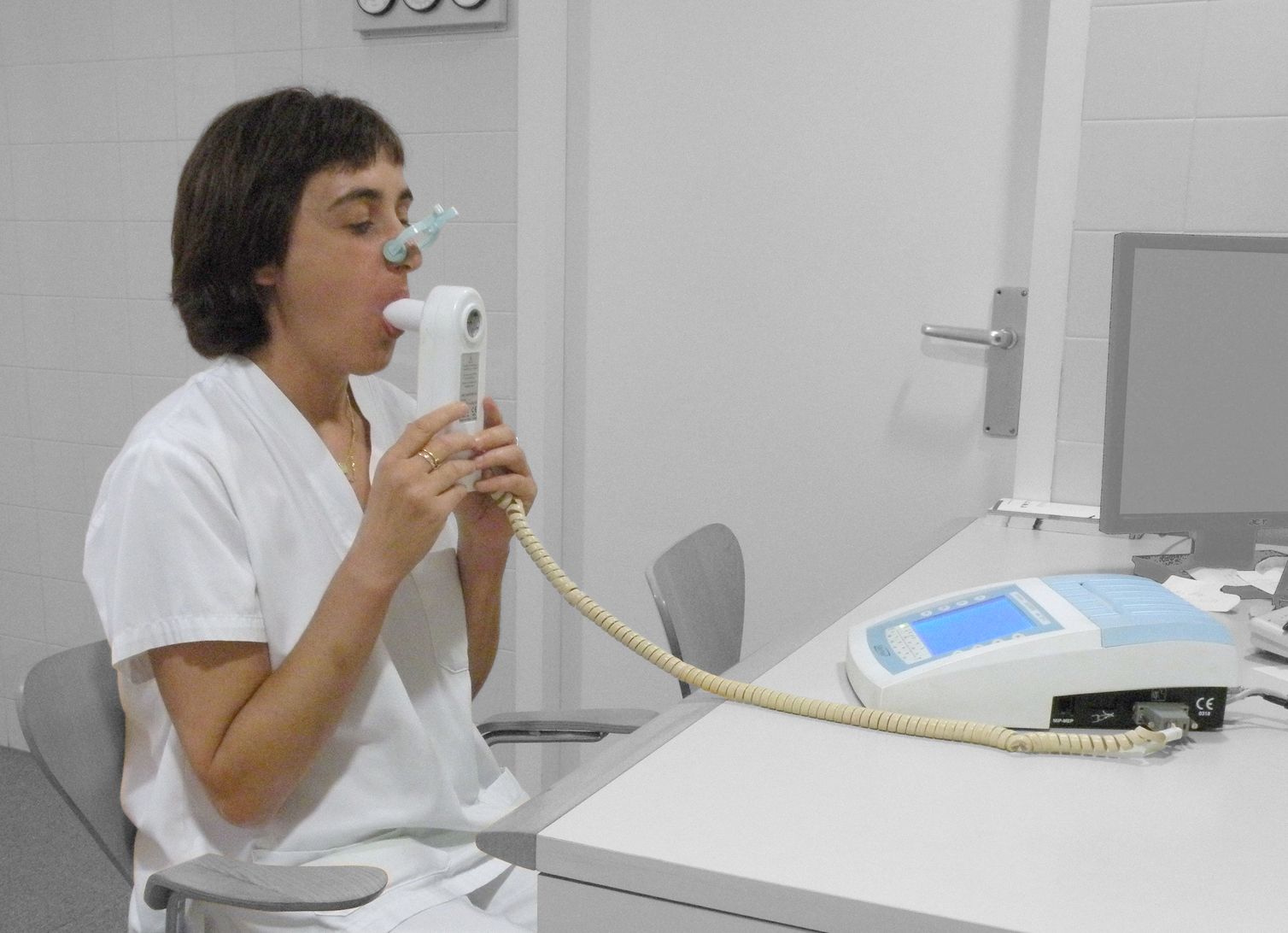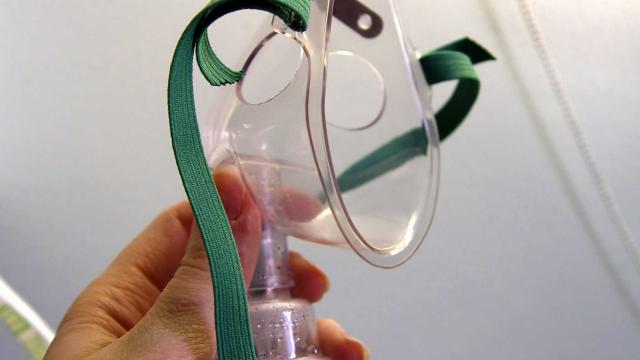Page Contents
OVERVIEW
This guide is dedicated to covering the topic of how to approach treating patients who have the chronic obstructive pulmonary disease (COPD).
WHAT IS IT?
COPD at its core, is a very self descriptive condition. It is characterized fundamentally by pathological changes (due to chronic bronchitis and/or emphysema) that obstruct airflow OUT from the lungs.
Patients simply are not able to expire all of their inhaled air upon breathing out. This is because airway obstruction and premature airway closure block the path of expired air leading to hyperinflation in the lungs. This hyperinflation (over time) will lead to a decreased ability to inspire sufficient volumes of air on subsequent breaths, leading to decreased delivery of oxygen to the lungs and the blood (causing decreased O2 saturation levels).
WHAT IS THE BASE TREATMENT GOAL?
Given the nature of this condition, the treatment goal really is quite simple: improve the ability of the patient to oxygenate their blood by reducing airway obstruction and (if needed) increasing the inspired fraction of oxygen.
What are the means by which we can reduce airway obstruction? In reality we only have a finite number of interventions that we can offer patients to help reduce airway obstruction. These include:
- Anti-cholinergic (anti-muscarinic) agents: muscarinic acetylcholine activity is responsible for causing bronchoconstriction in the lungs. By blocking this signaling pathway we are able to decrease airway obstruction by promoting bronchoodilation.
- Beta-2-agonists: this adrenergic signaling pathway is responsible for mediation bronchodilation in the lungs. Agonizing this pathway increases these effects and results in decreased airway obstruction.
- Inhaled corticosteroids: these medications will decrease inflammation, which in turn can further decrease obstruction in the airways.
How can we increase the fraction of inspired oxygen? Really this element of treating COPD involves providing patients with supplemental oxygen. While this intrinsically will not help with airway obstruction, it will make it much easier for patients to oxygenate their blood and maintain an oxygen saturation.
HOW DO WE DIAGNOSE AND THEN CHARACTERIZE COPD?
Fundamentally COPD is diagnosed using pulmonary function tests/spirometry: patients who have a FEV1/FVC < 0.70 (that is not fully reversible in the setting of administered bronchodilators) are given the diagnosis of COPD. These results on pulmonary function test represent an obstructive condition that is not fully reversible (the fundamental characteristic of COPD).

Once COPD has been diagnosed, other components of spirometry can be used to characterize its relative severity: mainly the value of the FEV1 (expressed as a fraction of what is predicted to be a “normal” FEV1 in the patient) is used to characterize the severity of airflow limitation in the patient. The old GOLD criteria are used for this purpose.
- GOLD 1 (mild): FEV1 ≥ 80% predicted
- GOLD 2 (moderate): 50% ≤ FEV1 < 80% predicted
- GOLD 3 (severe): 30% ≤ FEV1 < 50% predicted
- GOLD 4 (very severe): FEV1 < 30% predicted
Given the old GOLD criteria did not allow for qualifying patient symptoms there are other tools used in assessing the severity of COPD: these include subjective patient questionnaires such as the:
- Modified Medical Research Council questionnaire (mMRC): a copy can be found here
- COPD Assessment Test (CAT): a copy can be found here
Combining all of this information together we settle upon the NEW GOLD CRITERIA: this more comprehensive set of criteria separates patients into 4 categories (A-D) to help tailor treatment options.
A = Low risk, low symptom burden
- Subjectively these patients have low symptom burden (mMRCof 0-1 OR CAT score < 10)
- Objectively these patients have a FEV1 of 50% or greater (old GOLD 1-2) AND low exacerbation rate (0-1/year)
B = Low risk, higher symptom burden
- Subjectively these patients have a high symptom burden (mMRC of 2 or more OR CAT of 10 or more) AND
- Objectively these patients have a FEV1 of 50% or greater (old GOLD 1-2) AND low exacerbation rate (0-1/year)
C = High risk, low symptom burden
- Subjectively these patients have low symptom burden (mMRCof 0-1 OR CAT score < 10) AND
- Objectively these patients have a FEV1 < 50% (old GOLD 3-4) AND/OR high exacerbation rate (2 or more/year)
D = High risk, higher symptom burden
- Subjectively these patients have a high symptom burden (mMRC of 2 or more OR CAT of 10 or more) AND
- Objectively these patients have a FEV1 < 50% (old GOLD 3-4) AND/OR high exacerbation rate (2 or more/year)
THE UTILITY OF PROPERLY CHARACTERIZING COPD TAILORING TREATMENT TO PATIENTS
The process of characterizing the patient’s COPD may seem tedious (it is!) but is only done so that we can properly tailor treatment to patients: at the end of the day, the role of the physician is to ADDRESS the patients illness and try and manage the patient’s symptoms/lower the risk of future. Let us explore what we actually end up doing best upon patient category (check out this American Family Physician page for more information).
Group A Patients generally should be treated with a short-acting medication (on an as needed basics). Options include:
- Short acting anticholinergics: such as Ipratropium
- Short acting beta-2 agonists: such as Albuterol
Group B Patients generally should be treated with a longer acting medication (given their increased symptom burden). Options include:
- Long acting anticholinergics: such as Tiotropium
- Long acting beta-2 agonists: such as Salmeterol
Group C/D Patients have a few different options regarding treatment regiments.
- Long acting anticholinergics: such as Tiotropium.
- Combination of an inhaled corticosteroid and long-acting beta2 agonist: such as fluticasone/salmeterol (Advair)
Group D Patients Who Remain Symptomatic often require more aggressive therapy due to their increased symptom burden.
- Combination of an inhaled corticosteroid and long-acting beta2 agonist: such as fluticasone/salmeterol (Advair)
WHAT ABOUT SUPPLEMENTAL OXYGEN? WHO NEEDS IT?
Severe hypoxemia generally is the indication for patients to be placed on supplemental oxygen. The criteria commonly used are either a oxygen saturation of less then 88%, or a partial arterial oxygen pressure (PaO2) of < 55 mg Hg. The general goal of oxygen therapy should be ~90% to try and avoid respiratory acidosis.

FURTHER READING
Page Updated: 08.16.2016